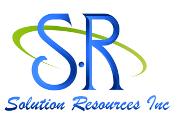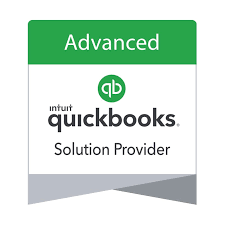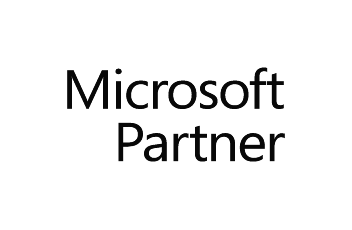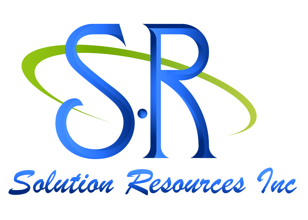|
QuickBooks is listed as one the top 15 Accounting Software Programs
|
|
Best Practices – Year End & BeyondEvery year you close the books. But are you capturing all of the correct information? Wouldn’t it be better to have a reliable set of books throughout the year and at year end, and not months after the fact when your accountant sends the information back to you after they’ve prepared the taxes? Try something new. This year, before you begin, make an assessment of who will be reading your financial statements and why. Considerations are as follows: · Owners – To assess business performance and identify strategic steps that need to be taken. · Management – your/their needs are twofold. First they need involvement in reviewing the items that are under their control. The manager needs to do a look-back and evaluate the accuracy of what is recorded, and identify potential errors. In the analysis, key questions to consider are what, when and most importantly, why. · Lenders -need to know if they will be repaid. This will depend on the solvency of the company, which should be revealed by the Balance Sheet. Long-term loans may also be backed by 'security' given by the business over specific assets. The value of these assets will be indicated in the Balance Sheet based on historical cost as depreciated. Another key issue is loan covenants. · Government agencies- The tax authorities use financial statements as a basis for assessing the amount of tax payable by a business. · Others – Customers, suppliers, and others may need financial statements in securing standard business contracts. Most users desire only one thing. Accurate financial reporting. We will consider the users’ needs and ratios in developing the Dashboard Key Indicators later in the article. So first, we will address a few year-end close items and Best Practices. (Okay… Share these with your controller.) · Equity: First of all, check retained earnings and equity for agreement with last year’s tax return. If there are errors, you might have posted something after last year’s close. Investigate and correct. If significant, discuss with the owner and your tax advisor. An amended return might be necessary, but most often that is not the case. You can run the amounts through the current year. To ensure this does not occur in the future, go to Edit: Preferences, and set a year end password. THE MOST BASIC ACCOUNTING RULE TO REMEMBER IS THAT “IF THE BALANCE SHEET IS CORRECT, THE P&L FALLS OUT.” What that means is that you start with the balance sheet analysis and when all balance sheet items are covered, the bottom line is correct. Items may not be in their appropriate "buckets", but your income or loss is correct. Chart of accounts: o Many companies have a chart of accounts that not even General Motors would consider. Review the chart of accounts for inactive, old, and duplicate accounts. Consolidate or merge wherever possible. This eliminates guessing games in coding the accounts and more consistent reporting. Assets: · Banking: o Make sure all bank accounts are reconciled. o For those outstanding items, review for reasonableness. Old outstanding checks may indicate replacement checks were issued and the original check not voided. Be careful about voiding. If it was an accounts payable check, voiding it will reinstate the payable. o Old deposits not cleared require special attention. You should look into the cause. · Accounts Receivable: o Review the listing for unusual items including aged receivables. Do you have special collection procedures? After identifying any errors and correcting them, you need to either reserve them or write them off. You only get a tax deduction when you write them off. o There are Customizable Reports in QB Enterprise to assist management in analyzing the business. · Inventory: o Physical Count (Cycle Counts) o Check units of measure o GL agrees to inventory listing o Is there inventory in transit? Title passes on purchase but not yet received? o Lower of cost or market. This is much more than financial reporting, it’s a matter of business effectiveness. Remember, you are not a museum. You should not hold inventory for longer than a year, preferably much less. Remember Average Cost or FIFO o Customizable Reports in QB Enterprise · Prepaid expenses and other current assets: o Many insurance packages require deposits and formal payment terms. Consider setting up the full insurance amount as prepaid with memorized write-offs monthly, then set up the corresponding liability in accrued expenses and code the payments against this account. · Total Current Assets are those that can be converted to cash within one operating cycle, generally one year. · Fixed Assets: o For long-lived assets it is a “best practice” to keep copies of purchase documentation in either a book, or if you are using QB, attach the document to the record in fixed assets. If you have ever been through a sales tax audit, you will recognize the need for this step. o Keep in mind capitalization rules. Do not capitalize small items. [1] o Make sure assets no longer in use or sold are removed from the listing. This step in necessary in reporting tangible assets for state tax reporting. o Make sure you have set up items for fixed assets. This will ease time consuming tasks of managing fixed assets. Additional information included in a fixed asset item are identifiers, i.e. VIN number for vehicles, warranty and more. o Use fixed asset manager in QB Enterprise to manage fixed assets and calculate and record depreciation. · Other Assets, including Goodwill: o For other assets, these are generally long-term in nature. It is a good idea to keep copies of the support similar to that for fixed assets. o Effective for FY 2015 & beyond, an accounting alternative is available whereby for existing and future years, acquired goodwill is written off over 10 years. Liabilities & Equity · Accounts Payable: o Vendor lists – review for duplicates and inactive vendors. o 1099’s - Remain cognizant of the 1099 rules for Non-employee Compensation, attorney compensation and rents.[2] o W-9’s o Customizable Reports in QB Enterprise · Accrued Expenses o Accrued interest on debt including shareholder debt o QB can also assist you in tracking workers compensation. The codes and rates are set up under the Employees tab, with the appropriate codes assigned at the employee detail level. You can also run worker’s compensation reports and evaluate the accuracy and validate the amounts payable. o Make sure the payroll tax liabilities agree to the reports provided to the governing agencies. o Other accruable expenses include payroll, insurance, commissions, etc. o Auditors will send a legal representation letter for pending litigation. One item of concern to them is incurred but unbilled legal fees. You can request that directly from your attorney. o If you have significant litigation, prepare a management summary/analysis and evaluate for potential disclosure · Notes Payable and Current Portion of Long-term debt o Lines of Credit and short-term obligations are considered Current Liabilities. In addition, you must calculate the Long-term debt that will mature in the coming year. · Total Current Liabilities are obligations that will be required to be paid out of current assets within one year. · Long-term Debt o Compare GL balances to statements or amortization schedules provided by the lender. Use a contra account to show the current portion deduction against long-term debt. With the credit in current liabilities. o Leases should be analyzed keeping in mind bargain purchase options and life of asset vs life of lease. There are other criteria for capitalization as well and there is an upcoming accounting standard that limits those lease agreements that will qualify as operating leases. · Shareholder Receivables or Obligations/ Related Party Receivables or Obligations. o These are transactions between the business entity and either shareholders or related parties that arise from either funds advanced to or received from these parties, including true-ups of distributions. Generally these are not formalized, but the nature and repayment terms should be memorialized in minutes. Leases, however are generally formal arrangements. The short and long-term portions allocated in the financial statements should agree with the minutes or other documentation. · Equity o Journal entries may be necessary to apply earnings from prior years to equity accounts and close out distributions. o Evaluation and verify distributions are properly recorded. Depending on your company’s earnings and organizational structure, you might have distributed too much or in improper percentage ratios. Check with your accountant. The Income Statement. Revenues, Cost of Sales and Expenses · Sales are relatively straightforward unless you have unusual term or are in certain industries. Consider your sales terms. When does title pass for tangible goods? This might impact year-end cutoff for both sales and cost of sales. · Do you receive funds up front for services to be provided in the future? You may have either customer deposits or deferred revenue. · Do you enter into long-term sales contracts, for example construction contracts? In this case you must recognize revenue as earned based on a percentage of total costs incurred to total estimated costs. These estimates are a critical estimate for financial statement reporting and reliability is important. Have owner/management involvement in this process. A look-back for historical performance is important as well. · Cost of sales can be looked at in two ways, the top down approach reviewing gross margins in comparisons to prior periods or at more detailed levels by using the item profitability reports available in QB. Customer profitability is also a useful tool in analyzing and all of these beneficial in understanding the business and changes that may need to be made in pricing, contracts or product mix. · As for expenses, review large expense items (as you know, you can always drill down to the detail) and perform a year over year analysis, and if necessary, expenses as a percentage of Sales. The most important question to answer is WHY. · You can also identify expenses that are fixed vs. variable and assess accuracy accordingly. · One trick that is helpful in ratio calculations related to operating profitability is to include Interest, Income Tax, Depreciation and Amortization in the Other Expenses category. divided by sales is not a financial ratio but rather a profitability measurement reported in dollars. The purpose of EBITDA is to report earnings prior to certain expenses that are considered uncontrollable. EBITDA provides deeper insight as to the operational standing of an organization based on the costs management can control. If you are a larger company with more advanced financial reporting needs including preparation of financial statements to be reviewed or audited, you will need to understand the Statement of Cash Flows (very useful whether required or not) and a statement of shareholders’ equity along with appropriate footnote disclosures. A very useful tool in accomplishing an accurate close of the monthly/quarterly and most importantly annual books and records is to develop a Monthly/Annual Close checklist that describes the company’s specific needs, along with responsibility assignments and sign offs or deadlines. Now, let’s take a look at ratios. Determining the financial health of your company requires much more than figuring out how much money is in the bank. Ratios are a valuable tool in not only understanding how your business is performing but also how lenders and other users perceive your business. Financial ratios express relationships between financial statement items. Although they provide historical data, management can use ratios to identify internal strengths and weaknesses, and estimate future financial performance. Ratios are not generally meaningful as standalone numbers, but they are meaningful when compared to historical data and industry averages if industry norms are available. There are four types of financial ratios: liquidity, profitability, efficiency and, solvency. 1. Liquidity ratios provide information regarding the business’s ability to pay its short-term obligations from current assets. · The current ratio measures current assets in relation to current liabilities; o Current Assets ÷ Current Liabilities o A resulting ratio of less than one may indicate liquidity issues. · The quick ratio is a more stringent test to determine if assets excluding inventory are sufficient to cover immediate liabilities. o Cash + AR + Marketable Securities ÷ Current Liabilities. o A ratio of 1:1 means the company can pay obligations without selling inventory. o The rationale is that if you have to sell inventory to raise cash, you will need to discount it, which would deteriorate your normal margins. · Working Capital is Current Assets minus Current Liabilities and should always be positive and measures the company’s ability to weather hard times. · Adequacy of Resources or Burn Rate o Cash + Marketable Securities AR ÷ Monthly Expenses. o This ratio determines how many months you could operate without further influx of funds. 2. Profitability ratios tell you how your business is performing. · Sales Growth (year over year, quarter over quarter, etc.) o Current period sales –Previous Period Sales ÷ Previous Period Sales. · Gross Profit Margin o Gross Profit ÷ Total Sales o This ratio looks at direct costs as a percentage of the sales dollars generated. o This can be looked at period over period, by item (item profitability) and by customer (customer profitability) o Reviewing GM in total and at these two detail levels help you determine items and customers that might need revisiting, whether it is discontinuing a product or renegotiating a customer contract. · SGA (selling, general & administrative) to Sales o Selling, general & administrative expenses are considered to be indirect costs. o The ratio is determined by calculating SG&A ÷ Sales o This ratio shows you how you are controlling overhead. · Return on Equity o Net Profit ÷ Average Shareholders’ Equity o This ratio in an indicator of whether you are making enough profit to compensate for the risk of being in business. 3. Operational Efficiency Ratios show you how efficiently you are utilizing your assets and managing liabilities. · Receivable Ratios (applicable when most sales are not cash sales) o Accounts Receivable Turnover § Net Sales ÷ Average Accounts Receivable (Beginning plus ending ÷ 2) § This is the number of times trade receivables turnover during the year. The higher ratio indicates customers are paying therefore you are collecting cash quicker. § You can manage this by monitoring your collection efforts. o Days in Accounts Receivable § Accounts Receivable ÷ {Total Credit Sales ÷ 365} § Useful in determining whether to step up collection efforts or tighten credit policies. · Inventory Ratios o Inventory turnover (number of times you turn inventory) § Cost of Sales ÷ Average Inventory (Beginning plus ending ÷ 2) o Days in Inventory (DII) (How many days it takes to sell inventory) § This ratio shows production and purchasing efficiency § A high ratio indicates inventory is selling quickly; whereas a low ratio suggests obsolete inventory or overstocking. · Accounts Payable Ratios o AP turnover § Cost of Sales ÷ Average AP (Beginning plus ending ÷ 2) § The higher the turnover, the shorter the period between purchases & payments § A low turnover may indicate potential cash flow problems, whereas a high turnover might indicate unfavorable Vendor terms. 4. Solvency Ratios o This basic ratio is computed by taking Net Income and add back Depreciation with the resulting total divided by Total Liabilities. o Acceptable solvency ratios vary from industry to industry. However, as a general rule of thumb, a solvency ratio higher than 20% is considered to be financially sound. Generally, a lower solvency ratio of a company reflects a higher probability of the company being in default with its debt obligations. o Debt to Asset ratio and Debt to Equity are two other solvency ratios Most of these ratios will be useful in managing your business, but a heads up. First and foremost, if any of these ratios suggest negative trends, start thinking of what steps you need to take to remedy the issues. Be proactive first, but if reactive is necessary Consider loan covenant waivers, renegotiation of debt, pricing of inventory, and whether to change the product mix. In summary, by following the year-end close process (or doing so more frequently) and adding Financial Analysis to the process, you can stay in control and make the business a success. Furthermore, you can use the Company Snapshot (under the Company Tab) to help you make good and timely decisions. Key Performance Indicators, Business Plans, and Advanced Reporting will be addressed in future articles.
What is the de minimis safe harbor election? Under the final tangibles regulations, you may elect to apply a de minimis safe harbor to amounts paid to acquire or produce tangible property to the extent such amounts are deducted by you for financial accounting purposes or in keeping your books and records. If you have an applicable financial statement (AFS), you may use this safe harbor to deduct amounts paid for tangible property up to $5,000 per invoice or item (as substantiated by invoice). If you don't have an AFS, you may use the safe harbor to deduct amounts up to $2,500 ($500 prior to 1-1-2016) per invoice or item (as substantiated by invoice). Generally, payments to a corporation are exempt from 1099 reporting (including a limited liability company (LLC) that is treated as a C or S corporation). Reportable payments to corporations. The following payments made to corporations generally must be reported on Form 1099-MISC. Medical and health care payments reported in box 6. Fish purchases for cash reported in box 7. Attorneys' fees reported in box 7. Gross proceeds paid to an attorney reported in box 14. Payments to attorneys. The term “attorney” includes a law firm or other provider of legal services. Attorneys' fees of $600 or more paid in the course of your trade or business are reportable in box 7 of Form 1099-MISC.
|







